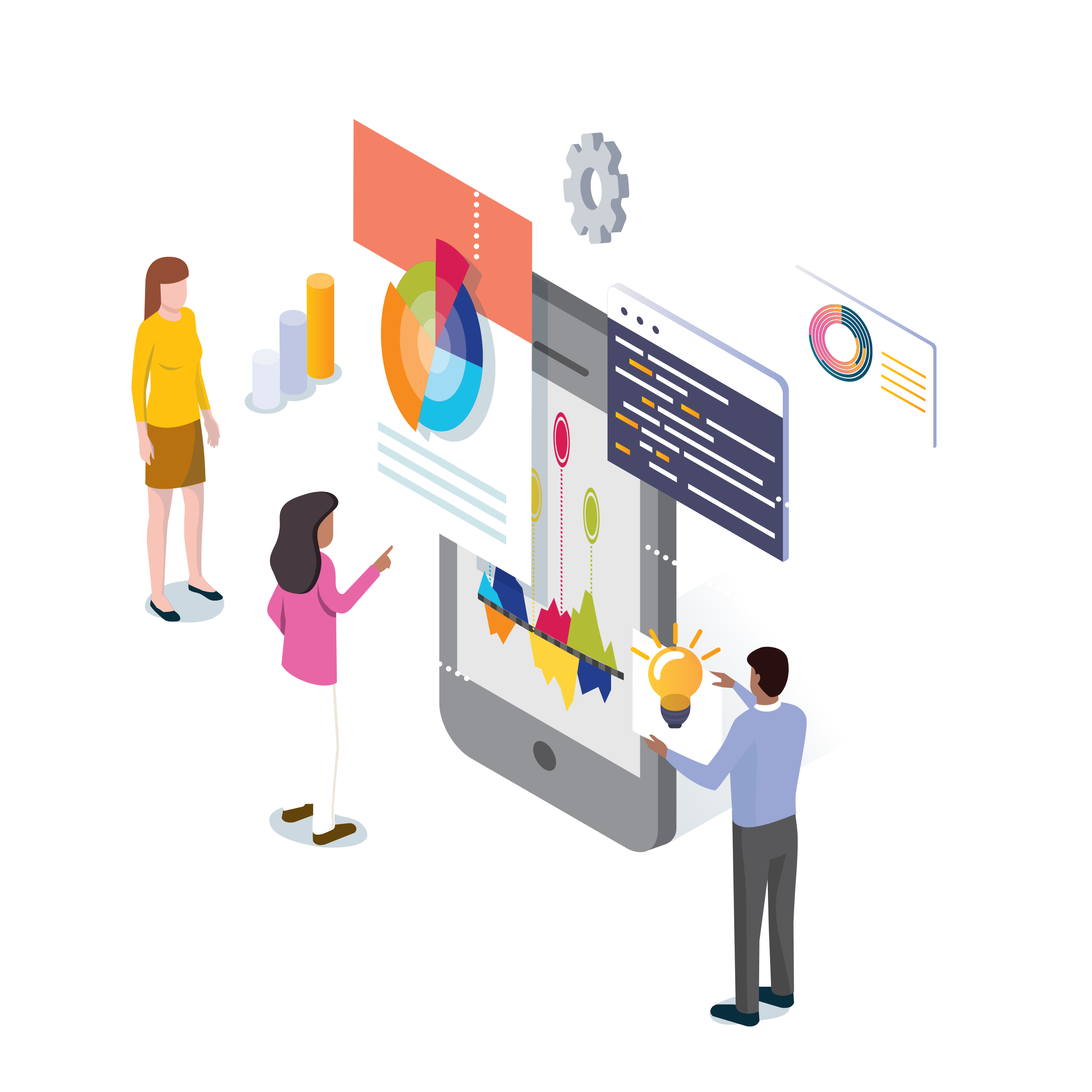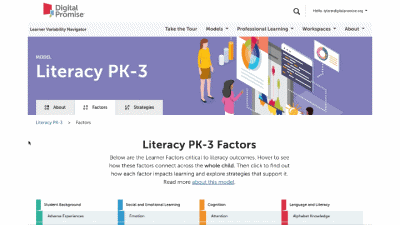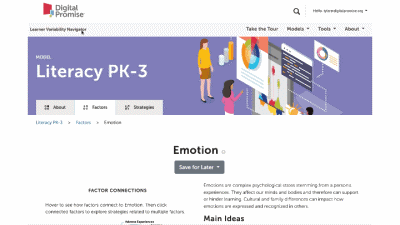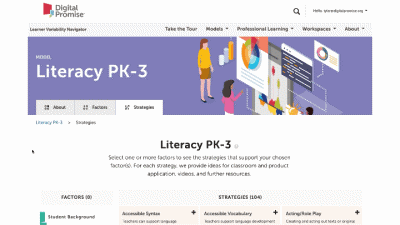Given the robust nature of learning sciences research, this website is best viewed on tablets and computers. A small screen experience is coming in the future.
On June 22, 2021, we will launch updated strategies for the Math PK-2 model, as well as additional updates to the Navigator that highlight equity, SEL, and culturally responsive teaching. To learn more, visit our Site Updates (available in the "About" menu at the top of any page).

Hover to see how factors connect to Self-Regulation. Then click connected factors to explore strategies related to multiple factors.
Self-Regulation is the ability to regulate our thoughts, emotions, and behaviors to meet a given goal. It plays a central role in planning, along with thinking and behaving flexibly, when dealing with new information. Self-Regulation is a limited capacity resource, meaning that it can become depleted over the course of the task or day, or can become drained when students are spending much of their energy working to focus in the classroom. Self-Regulation is supported by executive functions (i.e., Working Memory, Inhibition, and Cognitive Flexibility) and helps students regulate learning across several domains: cognitive, behavioral, and emotional. Importantly, some students may lag behind others in their executive functions which can contribute to slower development of Self-Regulation. Students who have ADHD often have co-occurring difficulty with Sensory Integration, which also impacts the ability to Self-Regulate. By the end of elementary school, children have typically developed a wide range of self-regulation skills. However, educators still play a critical role in encouraging students to further develop their Self-Regulation capacities beyond elementary school. An ability to engage in self-regulated learning is often associated with increased academic achievement, well-being, social competence, and decreased odds of risky behavior.
Creating visual representations such as drawings, diagrams, graphs, and concept maps, whether student or teacher-generated, can help students process abstract concepts, enhancing understanding and retention of information.
Project-based learning (PBL) actively engages learners in authentic tasks designed to create products or design solutions that answer a given question or solve a problem.
Encouraging children to draw and to explain their drawings in the classroom, can support the development of Core Academic Literacies, especially when solving complex problems across content areas.
Students explaining their thinking during learning is a metacognitive process that involves actively self-questioning or being questioned while exploring new concepts, and explaining thoughts and reasoning in response.
Games support learning, as learners engage with new information in fun and informal ways.
Gallery walks are ways of showcasing content and materials as multiple “exhibitions” for students to view and interact with as part of larger learning goals.
As learners work together to solve problems, they learn new strategies and practice Communication skills as they express their academic thinking.
Think-Pair-Share (TPS), also known as Turn & Talk (T&T), is when the teacher pauses instruction so students can discuss a topic or prompt in pairs or small groups, to enhance engagement and learning outcomes.
Goal-setting and monitoring involves teachers working with students to set individualized academic or behavioral goals, plan actions to achieve those goals, and track progress.
When students are able to encourage themselves through kind and motivating self-statements, they are practicing positive self-talk.
Communication boards are displays of graphics (e.g., pictures, symbols, illustrations) and/or words where learners can gesture or point to the displays to extend their expressive language potential.
Music and dance support learners in a myriad of ways, including supporting their engagement and motivation, connecting with cultural backgrounds, and offering structure during play.
Physical activity and recess refer to designated times and activities that allow students to engage in movement, play, and exercise, promoting physical and mental well-being.
Physical activity and recess in early childhood provides social, physical, and mental benefits to learners.
Providing instructional steps clearly and concisely can help learners understand classroom expectations, reduce cognitive load, and complete tasks more efficiently.
Discussing emotions with children consists of supporting their ability to identify, label, and manage their feelings.
Growth mindset is the belief that people can grow their intelligence and abilities (through effort, good strategies, and support from others).
Providing students a voice in their learning is critical for making learning meaningful.
Translanguaging is a flexible classroom practice enabling students to listen, speak, read, and write across their multiple languages or dialects, even if the teacher does not have formal knowledge of these additional languages.
Checking in with learners, or taking the time to talk with individual learners about their experiences or goals, is important for fostering a positive classroom environment.
Shadowing a student involves an educator, administrator, or designated adult observing a learner across different parts of their day to deepen their understanding of that learner's experience beyond their classroom.
A rubric is a tool that communicates expectations for success for students to achieve and can include symbols or charts that are easy for students to understand.
Flipped learning is when the delivery of traditional content (i.e., lectures, and videos) occurs outside of the classroom, allowing class time to be used for more active and application-based activities.
Feedback is the process of providing learners with information about their learning to support their progress and improvement, and can come from a range of sources, including teachers and peers.
Flexible seating refers to the practice of offering students a range of work surfaces, seating sizes and heights, movement, and varied body positions in the classroom.
Collaborative writing activities allow peers to work together to plan, draft, edit, and revise during the composition process, supporting writing skills and engagement with content knowledge as students write to reflect upon and apply what they have learned.
Spaced practice is a learning strategy that deliberately spaces out learning or study sessions over varying periods of time, with the purpose of increasing retention, understanding, and long-term knowledge acquisition.
Retrieval practice requires students to access information, or get information “out” from Long-term memory in order to support better retention and understanding.
Graphic organizers—including advance organizers—are powerful instructional tools that help students visualize how ideas fit together, supporting the construction of meaning and strengthening recall across content area.
Building positive and trusting relationships with learners fosters a Sense of Belonging, safety, and engagement, laying the groundwork for academic, cognitive, and social-emotional growth.
Incorporating multiple senses through strategies like chewing gum, using a vibrating pen, or sitting on a ball chair can support focus, Attention, and engagement for some learners.
When classrooms are intentionally designed to promote inclusion, belonging, and accessibility, they positively influence key learner factors, including Attention, Self-Regulation, Learner Mindset, and Sense of Belonging.
 Except where otherwise noted, content on this site is licensed under a Creative Commons Attribution-NonCommercial 4.0 International License
Except where otherwise noted, content on this site is licensed under a Creative Commons Attribution-NonCommercial 4.0 International License





This is our homepage. You can access many of the features of the Navigator here, and learn more about how learner variability intersects with topics in education and learning. To start, select a content area – we call them Learner Models – to visit a factor map.
Factor maps show research-based concepts, "factors," that likely impact learning. They are organized into four categories: Learner Background, Social and Emotional Learning, Cognition, and Content Area. The map is interactive. Move your cursor over a factor to see connected factors. Select any factor to visit its summary page. We'll look at factor summary pages next.
This is a factor summary page. It provides a brief definition and review of the factor, a factor connections diagram, additional resources, and strategies that support this factor. On the strategy card, the multi-colored boxes show all the factors that it supports. Select a strategy to visit its summary page.
Strategy summary pages have an overview, information about using the strategy in different learning environments, resources of interest, the factors this strategy supports, and related strategies you can explore. To view all the strategies in a content area, use the strategies tab at the top of the page. We'll look at all the Strategies for this learner model next.
The strategy page shows ALL of the strategies for that learner model. You can select factors of interest for you or your learners, and it will narrow the strategies to only those that match all of the factors selected. This makes it easy to find key strategies to better design for learner variability. Again, select the strategy name to visit its summary page.
Are you sure you want to delete this Workspace?
Enter the email address of the person you want to share with. This person will be granted access to this workspace and will be able to view and edit it.
Adjust the permissions of your Workspace.
This Workspace is .
This Workspace's Reflection Area is .
Learner variability is the recognition that each learner is a unique constellation of strengths and challenges that are interconnected across the whole child. Understanding these connections and how they vary according to context is essential for meeting the needs of each learner.
It disrupts the notion of a one-size-fits all education. Understanding learner variability helps educators embrace both students’ struggles and strengths as we connect practice to uplifting the whole learner.
Throughout the site, we talk about "factors" and "strategies." Factors are concepts research suggests have an impact on how people learn. Strategies are the approaches to teaching and learning that can be used to support people in how they learn best.
Use the Learner Centered Design Tool to build a workspace. Go to Learner Centered Design Tool.
Or, create a new blank workspace for your product or project.
Use one of the guided tools to build a workspace.
Or, create a new blank workspace for your product or project.
Make a copy of this workspace.
Redirecting soon...
Generating summary page
Loading...
On this page, using your heatmap, you will be asked to select factors to further explore, and then select new strategies you might incorporate into upcoming instruction. Once done, click “Show Summary" to view your Design Summary Report.
On this page, using your heatmap, you will be asked to select factors to further explore, and then select new strategies you might incorporate into upcoming instruction. Once done, click “Show Report” to view your Design Summary Report.
By selecting "Show Report" you will be taken to the Assessment Summary Page. Once created, you will not be able to edit your report. If you select cancel below, you can continue to edit your factor and strategy selections.
Announcement here
Item successfully added to workspace!
Issue adding item to workspace. Please refresh the page and try again.
Learner variability is the recognition that each learner is a unique constellation of strengths and challenges that are interconnected across the whole child. Understanding these connections and how they vary according to context is essential for meeting the needs of each learner. It embraces both students’ struggles and strengths. It considers the whole child.
Throughout the site, we talk about "factors" and "strategies." Factors are concepts research suggests have an impact on how people learn. Strategies are the approaches to teaching and learning that can be used to support people in how they learn best.
The Learner Variability Navigator is a free, online tool that translates the science of learner variability into factor maps and strategies that highlight connections across the whole learner. This puts the science of learning at teachers' fingertips, empowering them to understand their own practice and support each learner.